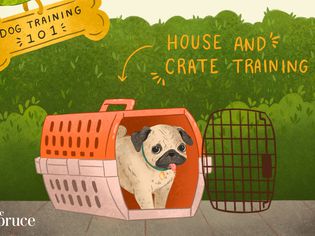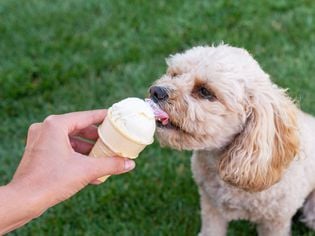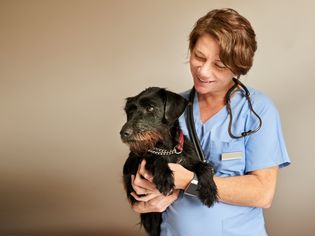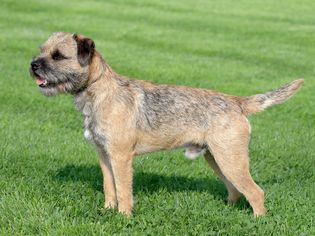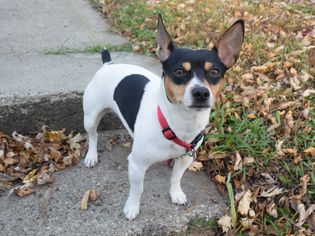Central Asian shepherds may be one of the first dog breeds to ever exist, but they definitely aren't a good first dog for someone looking for a pet. This breed has many exceptional qualities, but they are also very strong and fearless which can be difficult attributes for someone with no experience working with dogs. Knowing more about this large working dog can help you decide if they are the right fit for your lifestyle.
Learn all about the Central Asian shepherd, from their history to their care needs and more.
Breed Overview
Group: Working
Height: 25.5 to 27.5 inches
Weight: 88 to 110 pounds
Coat: Smooth with an undercoat
Coat Colors: Black, brindle, gray, white, fawn
Life Span: 12 to 17 years
Temperament: Protective, adaptable, trainable, strong, independent, courageous
Hypoallergenic: No
Origin Country: Various Asian countries
Characteristics of the Central Asian Shepherd
The Central Asian shepherd is a beautiful dog, but this breed is not appropriate for all pet parents, particularly novice dog parents who don’t have a lot of experience with training, socializing, and handling large and powerful dogs—this breed has an average height of 25.5 to 27.5 inches, and can weigh 88 to 110 pounds on average.
In addition to being large and intimidating, the Central Asian shepherd can be possessive and territorial. This is another reason why properly socializing them is so important.
With the right care and training, these dogs can be affectionate family dogs. They enjoy getting a lot of attention from their humans. However, they are known to bark, so that’s something to consider if you live close to your neighbors.
| Affection Level | Medium |
| Friendliness | Medium |
| Kid-Friendly | Medium |
| Pet-Friendly | Medium |
| Exercise Needs | Medium |
| Playfulness | Medium |
| Energy Level | Medium |
| Trainability | High |
| Intelligence | Medium |
| Tendency to Bark | Medium |
| Amount of Shedding | Medium |
History of the Central Asian Shepherd
The Central Asian shepherd is an ancient dog breed that dates back more than 5,000 years—it’s considered the oldest group of dogs today, according to the AKC. Rather than being developed by humans, these dogs adapted to the environments they lived in throughout Asia.
They have been used throughout the years to guard not only livestock but also people and possessions from animal predators, human invaders, and extreme climates. Because they’re territorial and great guard dogs, nomadic tribes still use them today for protection.
The USSR standardized the Central Asian shepherd breed in the 1920s. A newer Russian version of this breed is known as the Central Asian Ovcharka.
Central Asian Shepherd Care
Large, highly protective, and double-coated, the Central Asian shepherd needs specific care to keep them happy, healthy, and fulfilled.
Exercise
Central Asian shepherds are large and need some space to roam, but they aren't a high-energy breed. Long walks and a big, fenced-in yard to walk around in are ideal as this breed isn't looking to start sprinting or running in agility trials.
This dog should always be kept on a leash when outdoors because they may take off if they spot any danger.
Grooming
A thick double coat is beneficial for protecting this breed from harsh environments and is also a low-maintenance coat. Occasional brushing and bathing is all your Central Asian shepherd needs, but be prepared for a major shed once a year that some refer to as a "fur storm."
Ear cleanings should be done regularly to ensure this dog’s ears remain clean and healthy. Check the ears for signs of infection, inflammation, mites, and other problems that need veterinary care.
In addition, nail trims are important to keep them from becoming overgrown. Use high-quality clippers designed for dogs so you can perform this task easily.
Finally, teeth brushing should also be considered routine for Central Asian shepherds. It can take some time to train your dog to tolerate having their teeth brushed, but this step can help keep their teeth and gums healthy.
Training
Central Asian shepherds are strong-willed, independent, and intelligent, but they are also very protective and large. These qualities can make it difficult to train this breed, so it takes an experienced dog parent who can establish good training habits and routines early on.
Common Health Problems
Central Asian shepherds have been around for a long time without much human intervention, but they aren't completely exempt from health problems. Some issues that may affect this breed include:
- Hip dysplasia: This orthopedic condition affects the development of the hips, leading to mobility issues and pain.
- Ear infections: These infections can be caused by allergies, ear mites, excessive hair around the ears, water in the ears, and more. Symptoms include inflammation, head tilt, and ear discharge, among others.
- Parasites: Internal and external parasites can affect dogs in various ways. External parasites can cause itching, dry coat, and hair loss, as a few examples. Internal parasites can cause weight loss, digestive issues, and respiratory symptoms.
- Dystrophic epidermolysis bullosa: This hereditary problem causes a dog’s skin to be very fragile [added source] and prone to damage.
Yearly check-ups with your veterinarian can help keep your Central Asian shepherd healthy and catch any underlying issues. Once your dog is over the age of 7 or 8, twice-yearly check-ups should commence because dogs age much more quickly than humans, especially if they are a giant breed.
Diet and Nutrition
Like all dogs, Central Asian shepherds should eat a nutritionally complete diet formulated for dogs by veterinary nutritionists. The major dog food brands will usually meet these criteria.
Two meals a day helps to keep your dog's blood sugar regulated, but be sure to measure out the appropriate amount of food based on your dog's weight, age, activity, and caloric content of the food you are feeding.
It is often recommended to offer a food that is formulated for giant or extra-large breeds, but if you aren't sure what your Central Asian shepherd should eat, ask your veterinarian. Some dogs will require specific diets if they have certain types of health concerns.
Where to Adopt or Buy a Central Asian Shepherd Dog
The Central Asian shepherd is not as common as some other giant breeds, but they are still able to be purchased from breeders. The American Kennel Club (AKC) Marketplace is one way to find reputable breeders for this breed, but you may also be able to see and meet dogs and their people at dog shows, Expect to pay around $1,500 for a Central Asian shepherd puppy.
No matter how you source a breeder, though, be sure you are able to see the parents of the puppies and where they live before making a purchase.
Central Asian Shepherd Dog Overview
If you have room for a large dog, and you have experience as a dog parent, the strong and protective Central Asian shepherd might be perfect for you. But because of their training and socialization needs, there’s a lot to consider before bringing one home.
Pros of Central Asian Shepherds
- Low-maintenance coat
- Very loyal to their family
- Typically healthy breed
Cons of Central Asian Shepherds
- Can be aggressive toward strangers
- Not good for apartments
- Difficult to train
More Dog Breeds and Further Research
If you’re interested in other dog breeds that originated in Asia, check out:
- Akita
- Thai Ridgeback
- Chow Chow
- Are Central Asian shepherds good family dogs?
While Central Asian shepherds are very protective, they are not a relaxed or gentle breed. They can be aggressive with people they don't know, which makes it difficult to introduce new family members or friends into a home.
What’s the difference between a Central Asian shepherd and a Great Pyrenees?Great Pyrenees are gentle dogs that were bred to guard sheep. Central Asian shepherds are territorial and were bred to protect livestock and people. The personalities of these two dogs are very different.
How much do Central Asian shepherds cost?The average cost of a Central Asian shepherd is $1,500.

